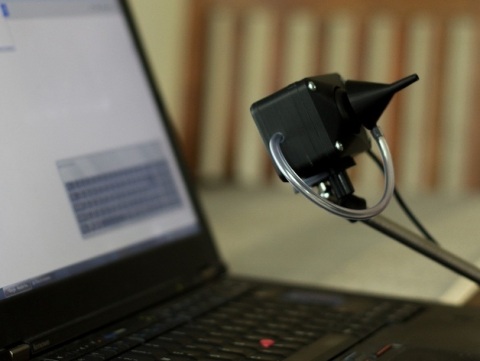Following the Bay Area Makeathon, MakerBot’s Thingiverse Community expands upon winning designs to create life-changing devices for people with disabilities.
BROOKLYN, N.Y. — (BUSINESS WIRE) — December 17, 2015 — MakerBot Thingiverse, the world’s largest 3D design community, is pleased to announce the winning designs from the Assistive Technology Challenge. The challenge asked the Thingiverse community to create 3D printed devices for people with disabilities and make them available for others. There are more than 200 million people with disabilities around the world who experience considerable difficulties in handling everyday tasks, and many of them can’t find off-the-shelf products that address their needs1. 3D printing can help solve some of the problem by providing the ability to create custom solutions at an affordable price.
This Smart News Release features multimedia. View the full release here: http://www.businesswire.com/news/home/20151217005996/en/

The Mouth Operated Mouse, designed by Tobias Wirtl, is this year's MakerBot Thingiverse Assistive Technology Challenge winner.
Following more than 170 submissions, Tobias Wirtl’s Mouth Operated Mouse is the winning design for the Assistive Technology Challenge. After reading about difficulties people with disabilities face in accessing new technologies, Wirtl wanted to create a device that could enable more people with disabilities to use the Web. A number of products on the market are geared toward helping people with disabilities navigate the Internet, but they can be very expensive making them out of reach for people who need them. Keeping cost in mind, Wirtl’s mouth operated mouse was designed so people of all economic backgrounds would be able to build one on their own or find somebody to build it for them.
“There are many new technologies that people with disabilities can’t access and in my opinion everyone should be able to benefit from today’s media, especially the Internet,” said Tobias Wirtl, creator of the Mouth Operated Mouse. “That’s why I decided to create a device that would allow people to navigate the Web. Products like these sell for hundreds of dollars. I created this one with one 3D printer and about $20 worth of commonly available components.”
The mouth operated mouse moves the cursor by using a mouthpiece, which works like a joystick. Pushing the mouthpiece towards the case operates the right mouse button. The left mouse button is emulated by a sensor that recognizes when the user sucks air through it. The system is controlled by an Arduino Pro Micro and can be connected to virtually any PC via USB.
Second Place - HU-GO is a 3D printable wheelchair for people who live in third world countries. Upon the creator’s visit to his home country of Chile, he realized that many children and adults needed wheelchairs and had no way of affording them. When he returned home, he started to evaluate his own wheelchair and make small adjustments and additions to make it better. Eventually he designed an affordable wheelchair that could be built using a 3D printer and a number of household items. He hopes that his design will make its way to countries with people in need, so they are able navigate their neighborhoods and their lives with ease. The wheelchair is comprised of 3D printed parts, plywood, zip ties and household items like socks and flour bags for cushioning.
Third Place - According to the inventor of Assistive Devices for Assistive Dogs, it’s not just people that need a helping hand - assistance dogs also need help manipulating environments that aren’t designed for them. The Assistive Devices for Assistive Dogs Starter Kit includes a 3D printable switch paddle, a door knob puller and a set of scent coded training fobs that make it easier for dogs to distinguish between multiple targets in a cluttered environment.
“Each time we hold a MakerBot Thingiverse Challenge, we are amazed by the things people create,” said Nadav Goshen, President at MakerBot. “We’d like to thank everyone who participated in this challenge and we encourage people to continue to create and expand upon these designs to empower even more people around the world who have disabilities.”
The Assistive Technology Challenge began shortly after the Bay Area Makeathon; a 72-hour event organized by Tikkun Olam Makers (TOM) and United Cerebral Palsy of the North Bay, and sponsored by Google.org. The event produced groundbreaking assistive devices for people with disabilities who can’t find or afford off-the-shelf products to address their needs. MakerBot launched the Assistive Technology Challenge on Thingiverse to make these life-changing inventions available to people with disabilities worldwide.
As the world's largest 3D printing community, Thingiverse encourages
everyone to create and remix 3D things, no matter their technical
expertise or previous experience. In the spirit of maintaining an open
platform, all designs are encouraged to use a
Creative
Commons license that lets others use and remix designs.








